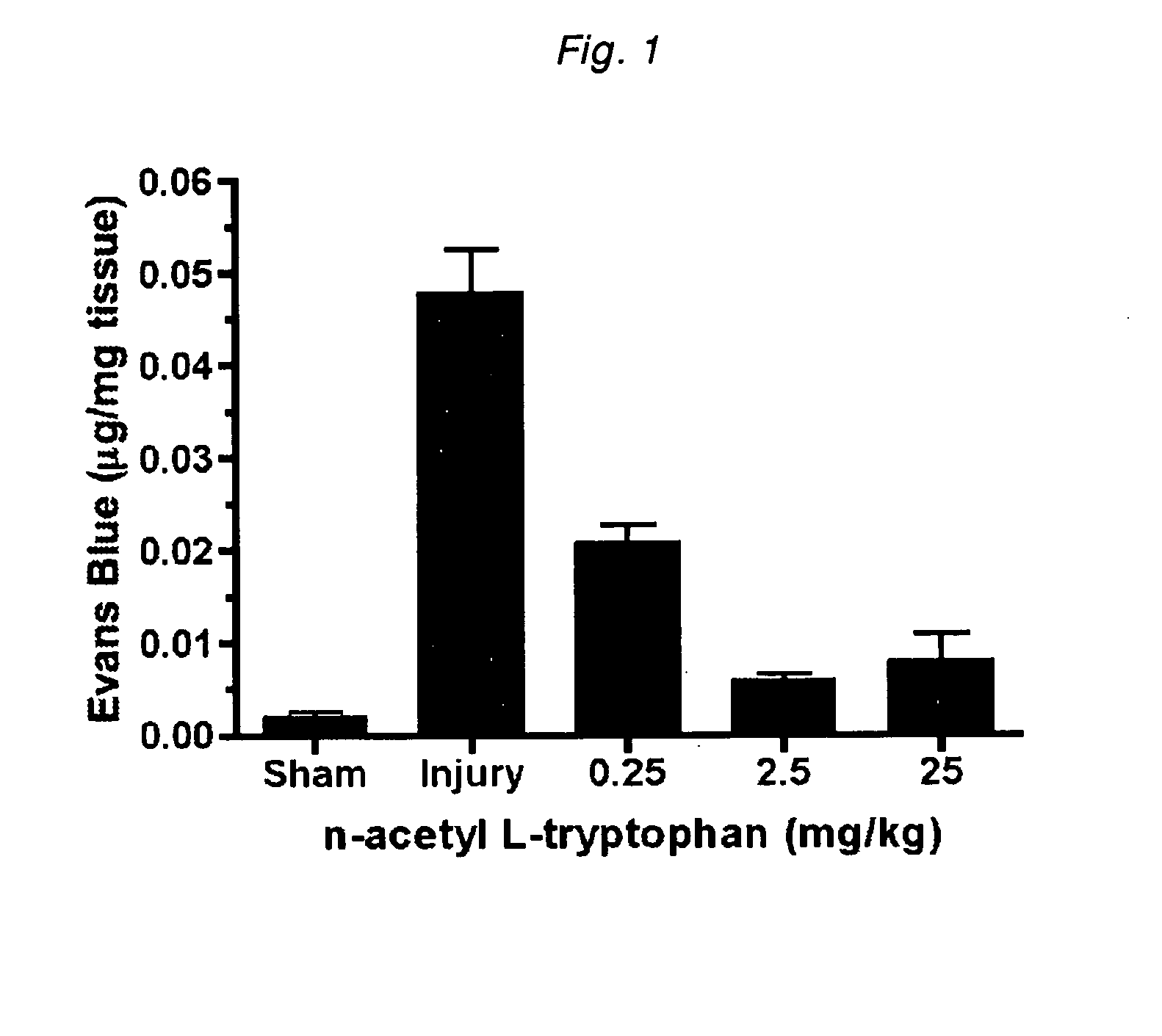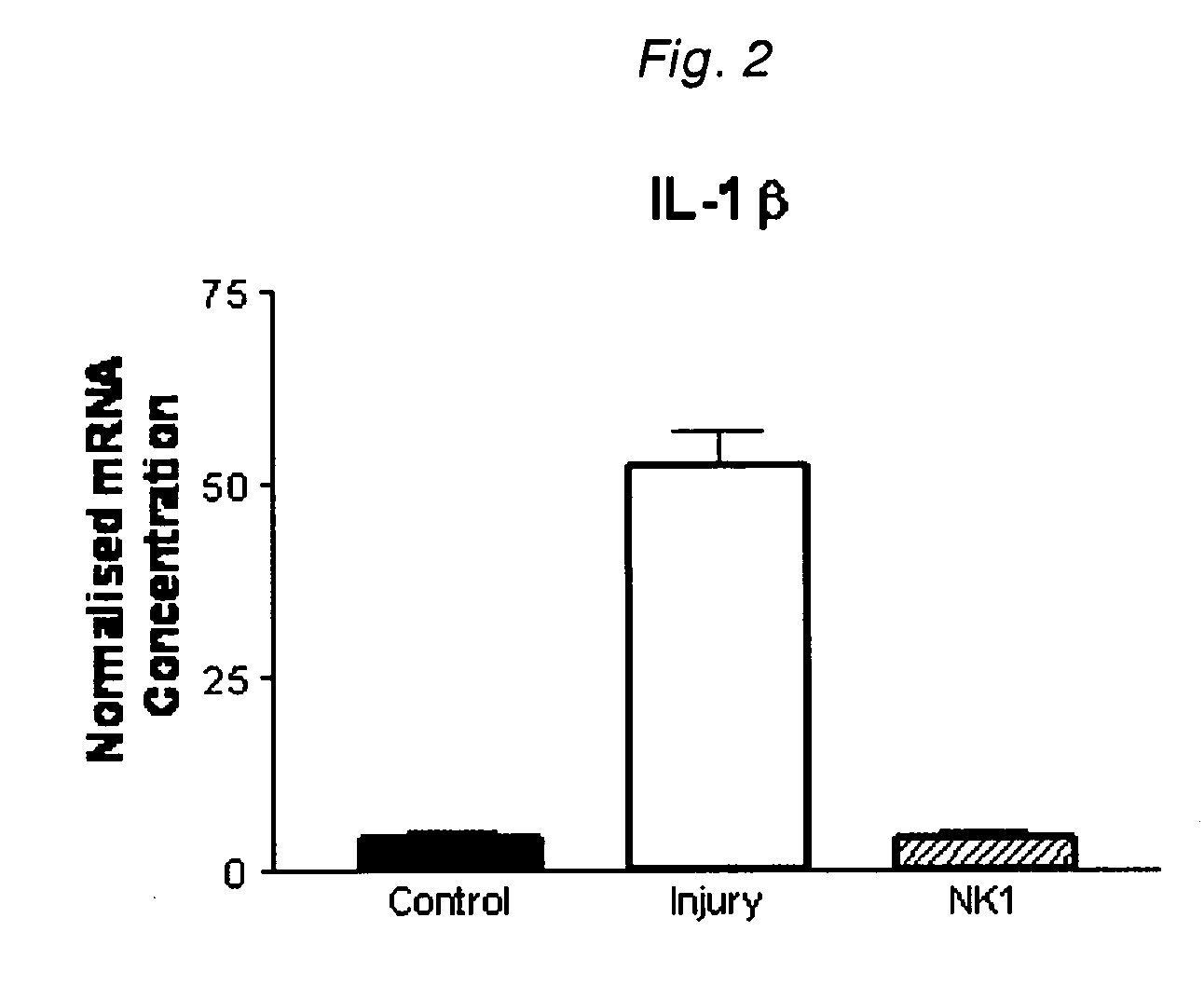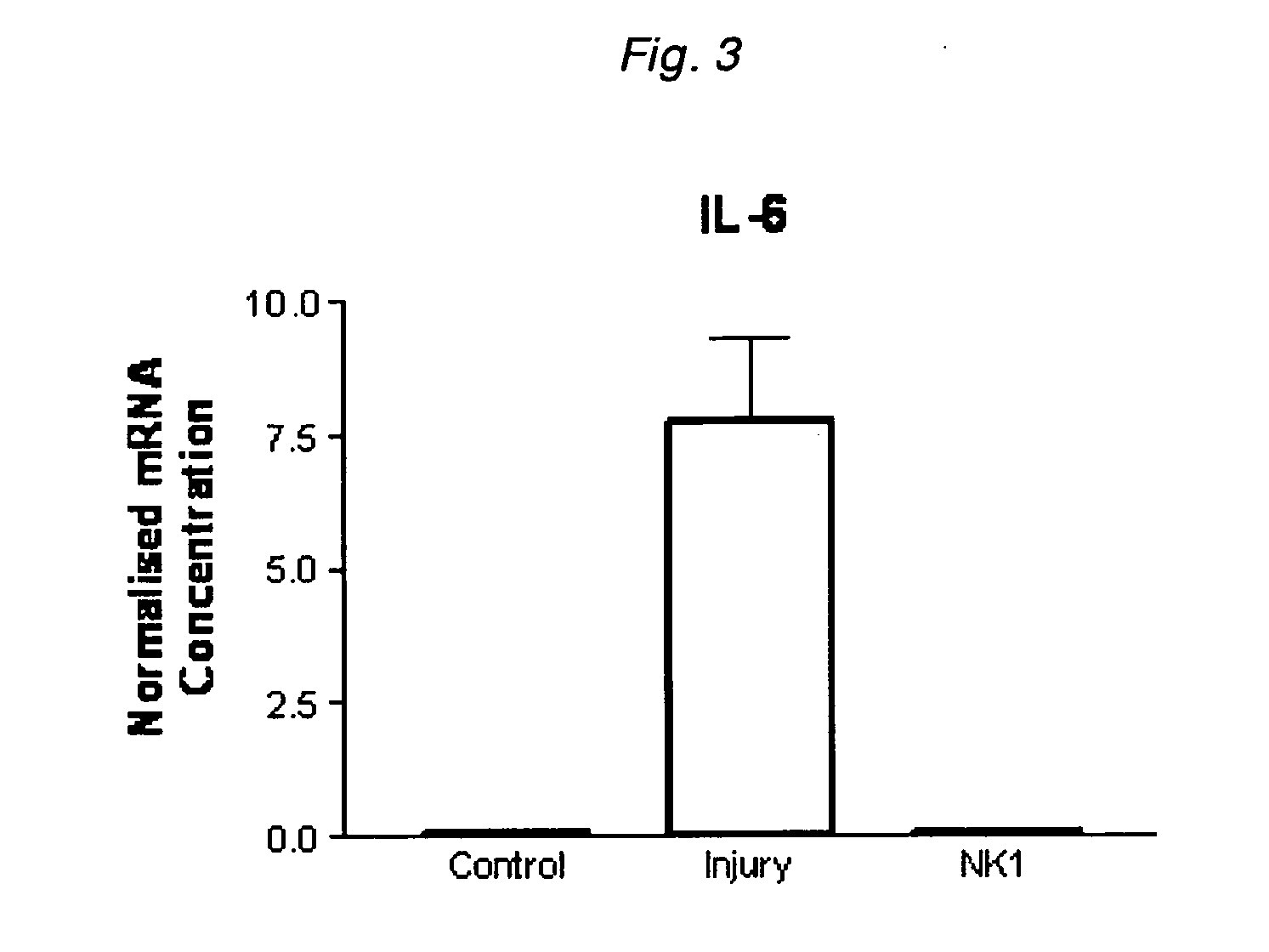Method for reducing inflammatory responses and inflammation
a technology of applied in the field of reducing inflammatory responses and inflammation, can solve the problems of widespread organ failure, unfavorable management of response, and multiple organ failure, and achieve the effect of reducing the inflammatory respons
- Summary
- Abstract
- Description
- Claims
- Application Information
AI Technical Summary
Benefits of technology
Problems solved by technology
Method used
Image
Examples
example 1
Administration of N-acetyl-L-tryptophan Closes the Blood Brain Barrier Following Injury
[0170]A number of commercially synthesised substance P (NK1) receptor antagonists are currently available from standard scientific chemical suppliers.
[0171]We chose to use the compound N-acetyl-L-tryptophan. To induce a primary brain injury a rat model of diffuse axonal injury was used (Heath D L and Vink R (1997). Magnesium sulphate improves neurologic outcome following severe closed head injury in rats. Neurosci Lett; 228: 175-8). N-acetyl-L-tryptophan was then administered intravenously 30 minutes after injury, whilst control animals received drug vehicle alone.
[0172]Administration of N-acetyl-L-tryptophan was found to close the blood brain barrier following injury, as evidenced by a reduced leakage of Evan's blue dye into the brain tissue (FIG. 1). This closure of the blood-brain barrier occurred in a dose-dependent manner.
example 2
Administration of N-acetyl-L-tryptophan Reduces the Expression of Inflammatory Cytokines Following Brain Injury
[0173]In order to examine the effects on the cellular inflammatory response, N-acetyl-L-tryptophan was administered intravenously at a dose of 10−5 mol / kg after injury.
[0174]The expression of mRNA for the inflammatory cytokines IL-1β, IL-6 and TNFα in brain tissue was determined by reverse transcription followed by a polymerase chain reaction (RT-PCR). mRNA levels were normalised with respect to expression of rpL32. Brain tissue samples were collected at 6 hours after injury. Levels of expression of mRNA for the inflammatory cytokines were compared in non-injured animals (sham), injured animals administered drug vehicle alone (control), and injured animals administered a substance P receptor antagonist (NK1). mRNA expression was determined for IL-1β (FIG. 2), IL-6 (FIG. 3) and TNFα (FIG. 4).
[0175]Animals subject to a brain injury exhibited a marked inflammatory response, wi...
example 3
Administration of N-acetyl-L-tryptophan Prevents a Systemic Inflammatory Response in Response to Insult
[0177]A whole variety of severe insults are capable of triggering a systemic inflammatory response, and subsequent shock reaction. Two approaches were used in these studies, namely trauma (diffuse axonal injury), and an extended period of hypoxia and hypotension.
[0178]N-acetyl-L-tryptophan was administered intravenously 30 minutes after the insult, whilst control animals received drug vehicle alone.
[0179]A systemic inflammatory response, generated as a result of these triggers, was determined by a rise in serum interleukin 6 levels. Blood samples were collected at 6 hours after the insult. Changes in serum IL-6 levels were quantified using an enzyme-linked immunosorbent assay (ELISA). In order to examine the effects of an NK1 antagonist on the systemic inflammatory response, N-acetyl-L-tryptophan was administered intravenously at a dose of 10−5 mol / kg 30 minutes after the insult. S...
PUM
| Property | Measurement | Unit |
|---|---|---|
| chemical properties | aaaaa | aaaaa |
| aliphatic | aaaaa | aaaaa |
| aromatic | aaaaa | aaaaa |
Abstract
Description
Claims
Application Information
 Login to View More
Login to View More - R&D Engineer
- R&D Manager
- IP Professional
- Industry Leading Data Capabilities
- Powerful AI technology
- Patent DNA Extraction
Browse by: Latest US Patents, China's latest patents, Technical Efficacy Thesaurus, Application Domain, Technology Topic, Popular Technical Reports.
© 2024 PatSnap. All rights reserved.Legal|Privacy policy|Modern Slavery Act Transparency Statement|Sitemap|About US| Contact US: help@patsnap.com










